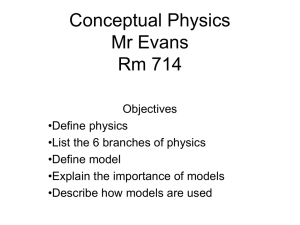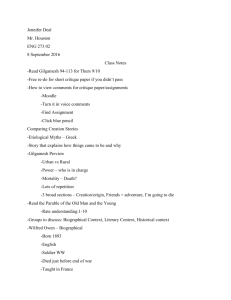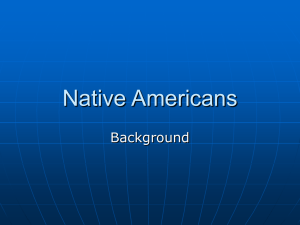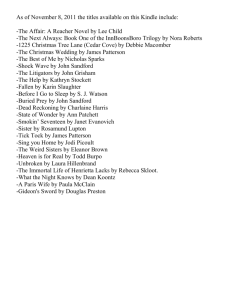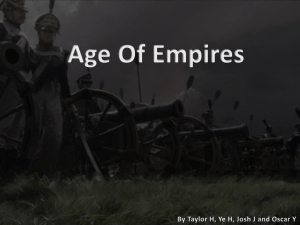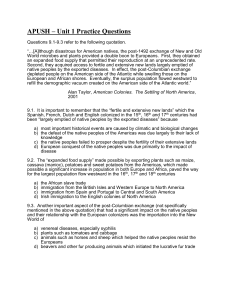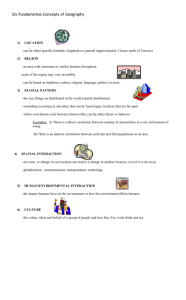Notes 2
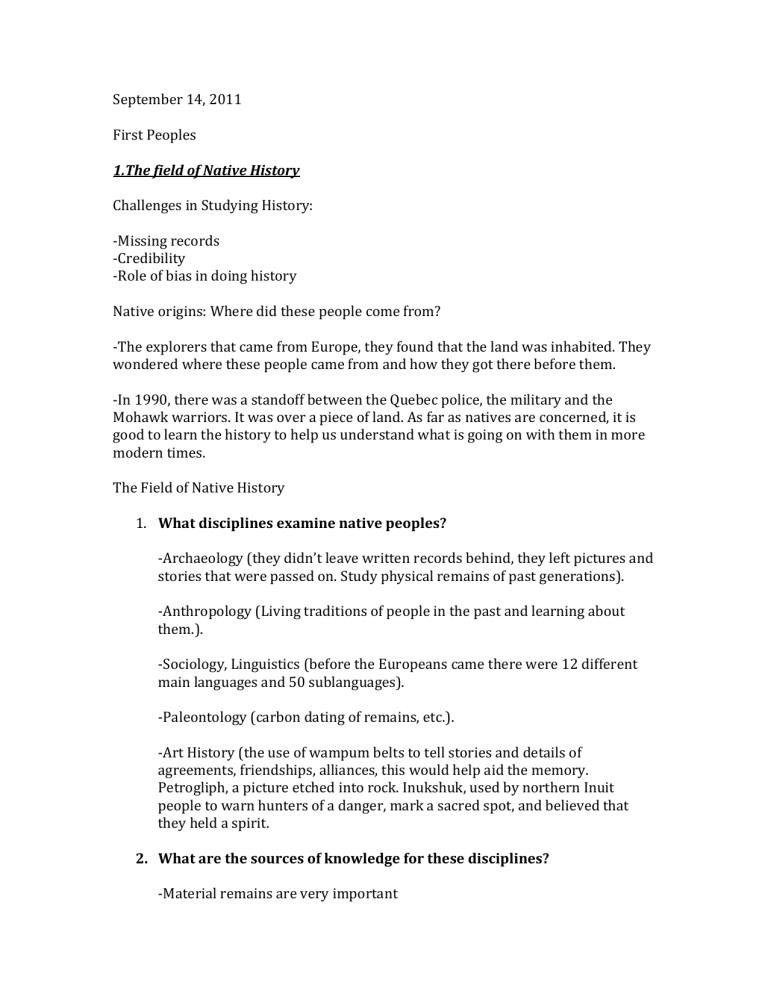
September 14, 2011
First Peoples
1.The field of Native History
Challenges in Studying History:
-Missing records
-Credibility
-Role of bias in doing history
Native origins: Where did these people come from?
-The explorers that came from Europe, they found that the land was inhabited. They wondered where these people came from and how they got there before them.
-In 1990, there was a standoff between the Quebec police, the military and the
Mohawk warriors. It was over a piece of land. As far as natives are concerned, it is good to learn the history to help us understand what is going on with them in more modern times.
The Field of Native History
1.
What disciplines examine native peoples?
-Archaeology (they didn’t leave written records behind, they left pictures and stories that were passed on. Study physical remains of past generations).
-Anthropology (Living traditions of people in the past and learning about them.).
-Sociology, Linguistics (before the Europeans came there were 12 different main languages and 50 sublanguages).
-Paleontology (carbon dating of remains, etc.).
-Art History (the use of wampum belts to tell stories and details of agreements, friendships, alliances, this would help aid the memory.
Petrogliph, a picture etched into rock. Inukshuk, used by northern Inuit people to warn hunters of a danger, mark a sacred spot, and believed that they held a spirit.
2.
What are the sources of knowledge for these disciplines?
-Material remains are very important
- Oral history is important as well. Most didn’t have written language so stories are very important. Are the oral sources dependable? Not super reliable, there would be a bit of truth in it, some details may be lost. An elder said: You put what the older people tell you, you have to tell it right, you don’t add to it. People who use oral tradition usually try to select someone with a very good memory and the memories would have to be well trained.
In oral culture, this is what passes it on. Scholar: Oral tradition doesn’t carry new information, just reaffirms what they have found in other ways. Stories shouldn’t be used to replace something found on record.
-The courts have recently said that native oral tradition will be taken to account to help solve a dispute.
3.
In General, What is the state of scholarship on native history?
- Mostly white European males were writing native history. They usually presented them in a stereotypical manner. Primitive, uncivilized, savage, superstitious, and child-like are some of the phrases that were used to present them. They either ignored them or depicted them in this way. Many believed that they were doomed to extinction.
-After WWII, lots of young people started going to university more than before. At
StFx, After the war, Bishops, Cameron, MacKinnon, Morrison, Nicholson, library, etc. were built new. (The Mount, Xavier hall, the annex, etc are pre-WWII). Since there was a boom in attendance, there was more research and information available.
- Brotherhoods were formed; one of them was the assembly of the first nations.
They would get together to lobby the government about treaties and things that were not in practice. Lots of native activism, which brought them more into the forefront of people’s minds. They became a force to be reckoned with. One historian said that their activism gave them more legitimacy. Here is the Bias challenge. The
Europeans that did the history before filtered it through their own biases. Most of native history is still being written by white people but natives are taking more charge.
2. Native Origins
- Native elders often have a different perception than the rest of us.
-If you go all across Canada and hear the origin story/creation story, they are usually similar using legends. The usual answer is that the creator/the Great Spirit put them here or they came here from another place.
-Declaration of First Nations from the first nations charter. We the original people of this land know the creator put us here. In land disputes they believe that this would give them a certain amount of clout.
-The first explanation is the creation story which many native believe and then the second explanation which is the European/scientific approach.
-The second explanation is that the oldest evidence of human beings is in Africa and that is where people originated and then they dispersed. How could they get to NA if they were in Africa? Through modern day Alaska and Siberia. It was believed that there was a land bridge called Beringia and that they crossed it. Tens of thousands of years ago there was an ice age and the water was much lower. So they travelled on foot. Eventually the ice age ended and the land disappeared. There is also the by sea theory. The peoples from the south pacific islands had various resources for longer travel or they may have came by boat from island near Japan.
-There is some evidence that these things are true. Apparently there are similarities in the people of Siberia and the Inuit. They had linguistic, physical features and DNA in common.
Native Culture Areas
-Native people at the time of european contact were greatly spread from vancouver island all the way to Newfoundland. Miq Maq, Maliseet, Cree, Beothuk, Blackfoot,
Iroquois, Ojibwae, etc. They adapted themselves well to the areas they lived in. On the west coast, Europeans found a dense population and this may be because of the supposed land bridge or because of the plentiful resources. They mostly had log houses and stuff. The people of the plains were nomadic and sparsely populated and depended on the animals and the seasons having no one address.


